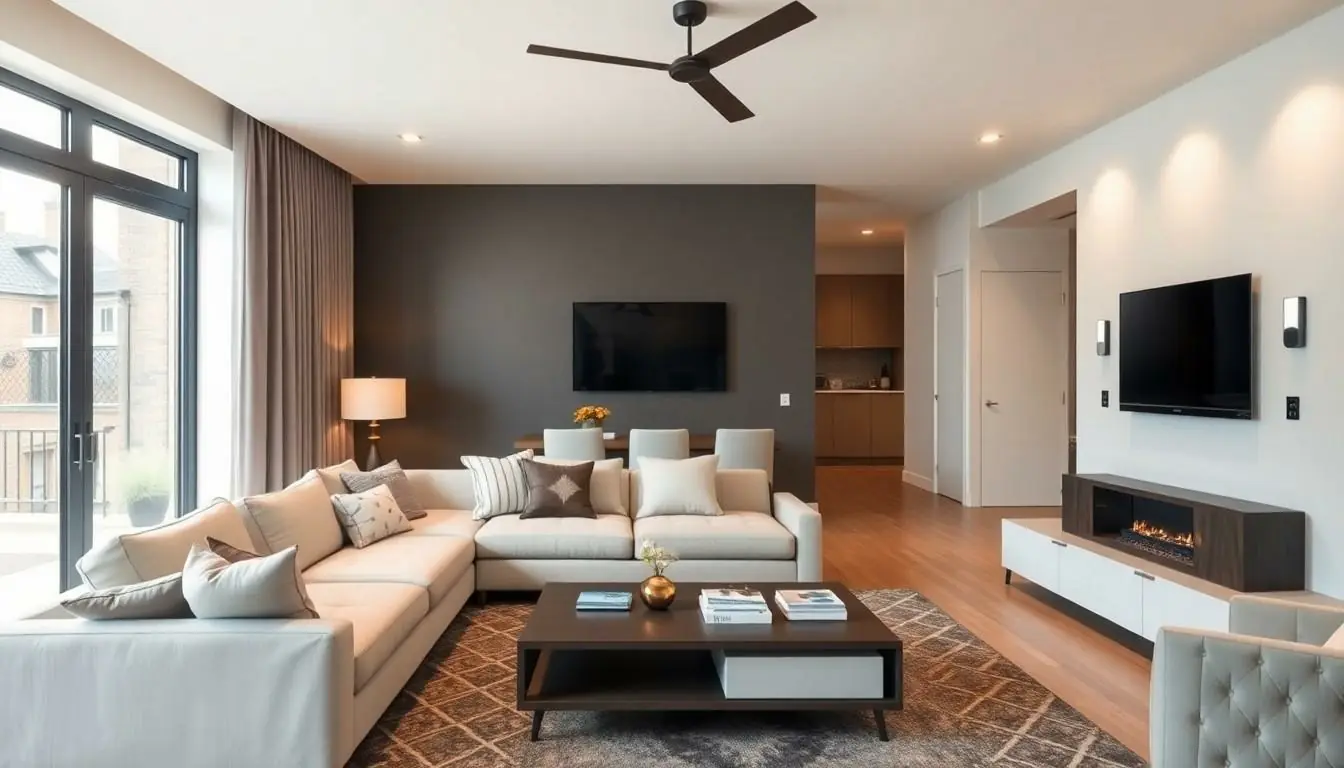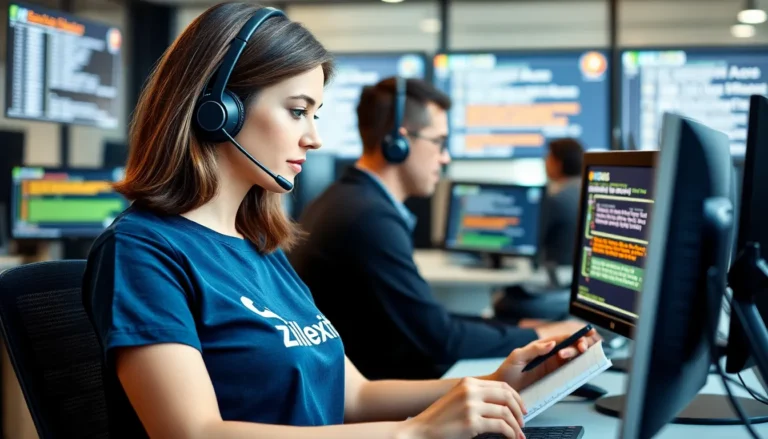Table of Contents
ToggleImagine walking into your home and having it greet you like an old friend. The lights dim, your favorite playlist starts, and the coffee brews itself—all without lifting a finger. Sounds like magic, right? Well, it’s not. It’s the reality of smart home upgrades, or as the tech-savvy like to call it, “smart home nachrüsten.”
In a world where everything from fridges to light bulbs can be controlled by your smartphone, why settle for a house that’s stuck in the past? Upgrading your home can be as easy as pie (and who doesn’t love pie?). With a few simple additions, you can transform your living space into a futuristic haven that even your tech-averse uncle will envy. So let’s dive into the delightful world of smart home enhancements and discover how to make your home work smarter, not harder.
What Is Smart Home Nachrüsten?
Smart home nachrüsten refers to upgrading an existing home with smart technology to enhance convenience, security, and energy efficiency. Individuals can transform traditional spaces into modern living environments through this process. Numerous devices and systems are available for retrofitting, ensuring that homeowners can tailor enhancements to their specific needs.
Smart lighting systems allow users to control brightness and color remotely, which can improve ambiance in any room. Smart thermostats adjust heating and cooling settings based on real-time data, leading to significant energy savings. Security cameras and smart locks offer peace of mind by allowing remote monitoring and access control, enhancing overall safety.
For those on a budget, starting with a single device, such as a smart speaker or light bulb, can lead to gradual integration of additional features. Many smart devices now support popular voice assistants, making operation simple and intuitive. Home networks need adequate bandwidth to ensure seamless communication among devices, especially as the number of gadgets increases.
Users often appreciate automation features that allow different devices to work together. For example, a smart home system can schedule lights to turn on when you arrive home and adjust the thermostat accordingly. This level of integration provides a more cohesive smart home experience.
Finally, smart home nachrüsten not only improves daily life but also adds value to the property. As technology advances, more potential buyers seek homes equipped with smart features. Investing in smart technology ensures that both current and future residents enjoy enhanced comfort and convenience.
Benefits of Smart Home Nachrüsten

Smart home retrofitting offers various advantages that enhance daily living, streamline tasks, and increase home value.
Increased Convenience
Convenience tops the list of benefits. Smart technology simplifies various household operations. Voice-activated assistants allow users to control multiple devices with a simple command. Smart lighting adjusts automatically based on natural light, eliminating the need to flip switches. Scheduling features help automate daily routines, saving time and effort. Homeowners can also monitor their homes remotely via smartphones, ensuring peace of mind whether they are away at work or on vacation. Customizable settings provide personalized experiences, from pre-heating the oven to initiating morning coffee brewing.
Enhanced Security
Enhanced security is another significant benefit. Smart security systems offer real-time monitoring through cameras and sensors. Homeowners receive instant alerts about unexpected movements or breaches. Automated locks enable keyless entry, eliminating worries about misplaced keys. Integration with motion-sensor lights deters potential intruders. Many devices provide remote access, allowing users to observe their property from anywhere. Innovative features like facial recognition can grant access only to authorized individuals, significantly boosting safety. Smart home technology creates a comprehensive safety net that protects loved ones and personal belongings.
Energy Efficiency
Energy efficiency ranks high among the advantages of smart home upgrades. Smart thermostats optimize heating and cooling based on user habits. Homeowners see reduced energy bills as these devices adjust temperatures automatically when rooms are unoccupied. Smart lighting systems utilize LED technology and can be controlled remotely, allowing users to turn off lights left on unintentionally. Thorough monitoring of energy consumption offers insights that promote further energy-saving habits. Many systems can also be programmed to work in harmony with renewable energy sources, such as solar panels. Over time, these enhancements not only reduce costs but also lessen environmental impact.
Popular Smart Home Devices for Nachrüsten
Smart home retrofitting introduces a variety of devices that enhance convenience, security, and energy efficiency. These devices cater to different needs, allowing homeowners to tailor their living spaces.
Smart Thermostats
Smart thermostats optimize energy use by learning occupants’ schedules. Users can control heating and cooling remotely, reducing energy consumption. Many models feature geofencing capabilities, adjusting temperatures based on the homeowner’s proximity. Additionally, they provide energy usage reports, helping individuals identify savings opportunities. Some popular brands include Nest, Ecobee, and Honeywell, which offer various features to suit different preferences.
Smart Lighting
Smart lighting systems offer customizable brightness, hues, and schedules, enabling users to create ambiance effortlessly. Integration with voice assistants allows hands-free control. Homeowners can set routines for lights to turn on or off at specific times, enhancing security and convenience. Options like Philips Hue and LIFX provide extensive compatibility with other smart home devices. These systems not only improve energy efficiency through LED technology but also add a luxurious feel to any space.
Smart Security Cameras
Smart security cameras enhance home monitoring with real-time video access and alerts. Users can view multiple camera feeds from their smartphones, ensuring peace of mind. Many devices include movement detection and night vision capabilities, increasing security effectiveness. Additionally, brands like Ring, Arlo, and Blink offer options that suit various budgets and preferences. These cameras not only act as a deterrent to intruders but also provide valuable footage for investigation purposes.
Considerations Before Nachrüsten
Before undertaking smart home retrofitting, several important factors warrant consideration.
Budget Planning
Planning a budget plays a crucial role in smart home upgrades. Determining the total amount homeowners intend to invest helps prioritize devices and features. For example, starting with one essential device, such as a smart thermostat or smart lighting, enables gradual expansion. An estimate of $100 to $300 suffices for basic devices, while more sophisticated systems may reach $1,000 or more. Including installation costs, if necessary, assures a comprehensive understanding of the financial commitment. Thus, recognizing budget limits helps guide decisions throughout the retrofitting process.
Compatibility with Existing Systems
Compatibility with existing systems significantly impacts the retrofitting experience. Assessing current setups, such as Wi-Fi networks or traditional lighting, ensures seamless integration of smart devices. Several smart home devices operate on specific standards; therefore, selecting products that work harmoniously with each other is essential. Checking whether devices support protocols like Z-Wave or Zigbee guarantees functionality. Often, manufacturers provide compatibility information, making it easier for homeowners to make informed choices. Moreover, existing home automation systems require consideration to maintain a cohesive, efficient smart environment.
Upgrading to a smart home offers numerous advantages that enhance daily living. By retrofitting existing spaces with smart technology, homeowners can enjoy increased convenience, security, and energy efficiency. The journey can begin with a single device, allowing for gradual integration that fits any budget.
With careful planning and consideration of compatibility, creating a cohesive smart home environment becomes achievable. As technology continues to evolve, investing in smart upgrades not only enriches current lifestyles but also adds significant value for future homeowners. Embracing smart home solutions is a step toward a more efficient and enjoyable living experience.




